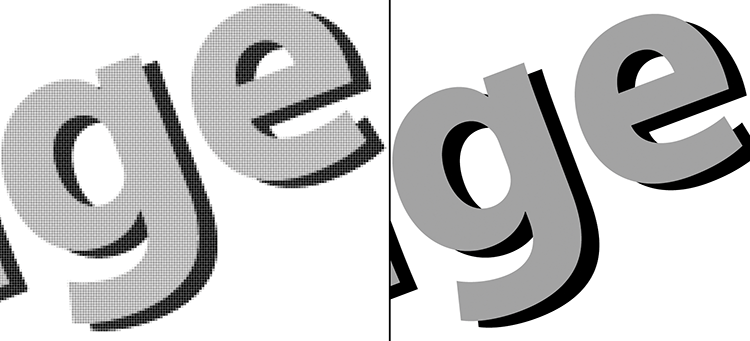Chapter 6
The Digital Portfolio
Technical Elements
Now that we have spent some time looking at the various multimedia-authoring and support programs available to help you design your electronic portfolio, you may be wondering how these programs work together. It is at this point that the graphics file format comes into play, and in this chapter, you will learn how to analyze some of the multimedia industry’s graphics formats. Fortunately, no matter what type of images you plan to add to your portfolio, the format selection process is pretty much the same.
But before we get started, recall from chapter 5 that computer graphics programs fall into three main groups: raster-based programs, vector-based programs, and page-layout programs (figs. 6-1 and 6-2). But it is also possible to have what are called metafiles, a type of hybrid file containing both vector and raster images. (Flash and Fireworks, the multimedia authoring program, fall into this category.)
Figs. 6–1 and 6–2: As you can see with these two examples, bitmapped images (such as those created with Photoshop) always look pixelated. However, images created with vector-based programs can be resized as much or as little as needed. The images will always look crisp.


Preparing Work for Digital Presentation
Working with Raster-Based ...
Get The Graphic Designer's Guide to Portfolio Design, 3rd Edition now with the O’Reilly learning platform.
O’Reilly members experience books, live events, courses curated by job role, and more from O’Reilly and nearly 200 top publishers.

